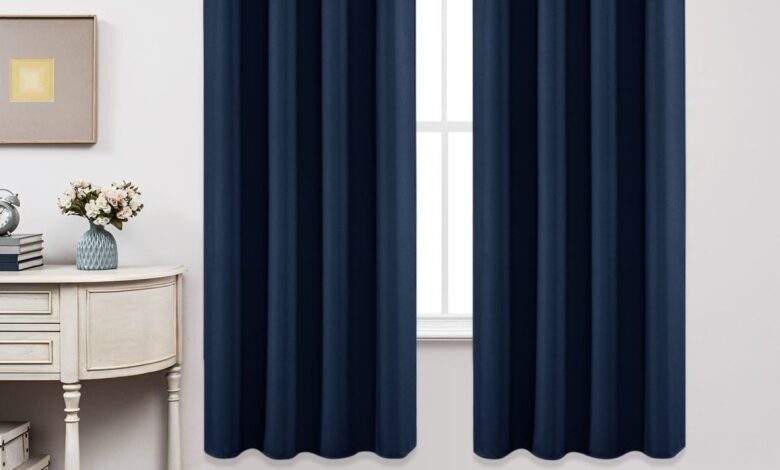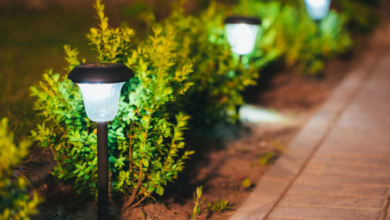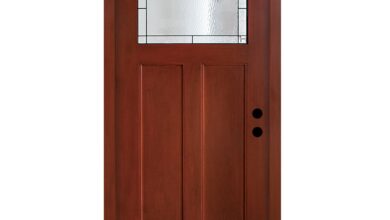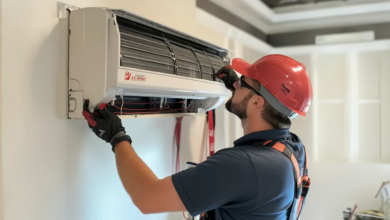Unlock Your Home’s Potential: Blackout Curtains for Style and Privacy

Your home should be a sanctuary where you control comfort, privacy, and ambiance. Yet many homeowners struggle with intrusive sunlight disrupting sleep, excessive heat driving up energy costs, and concerns about privacy from outside observers. Blackout curtains offer an elegant solution to these common challenges while enhancing your interior design.
Unlike standard window treatments, blackout curtains combine functionality with aesthetic appeal. They block up to 99% of incoming light, regulate indoor temperatures, and create a cocoon of privacy without sacrificing style. Whether you’re a shift worker needing daytime sleep, a parent establishing healthy sleep routines for children, or simply someone who values energy efficiency and home comfort, blackout curtains deliver measurable benefits. This guide explores why these versatile window treatments have become essential in modern homes, examining their advantages, varieties, and how to select the perfect option for your specific needs and décor preferences.
Why Blackout Curtains?
Modern living spaces face mounting challenges that traditional window treatments simply can’t address. Light pollution from streetlamps and neighboring properties infiltrates bedrooms at night, while intense afternoon sun transforms living rooms into uncomfortably hot spaces. Standard curtains and blinds provide minimal relief, allowing light to seep through fabric weaves and gaps around edges. This creates a cascade of problems: disrupted circadian rhythms affecting sleep quality, faded furniture and flooring from UV exposure, and skyrocketing cooling costs during summer months.
Blackout curtains address these issues through specialized construction that goes beyond conventional window coverings. Their tightly woven or foam-backed fabrics create an effective barrier against external light sources, while their thermal properties insulate windows against heat transfer. For shift workers sleeping during daylight hours, parents managing children’s nap schedules, or anyone sensitive to light during sleep, these curtains provide the darkness necessary for restorative rest. Beyond sleep benefits, they offer year-round energy savings by keeping cool air inside during summer and preventing heat loss in winter. The privacy they afford is equally valuable in urban settings or homes with close neighbors, creating a true retreat from the outside world. Rather than simply covering windows, blackout curtains transform how your home functions, delivering comfort and control that standard treatments cannot match.
Benefits of Blackout Curtains
Superior Light Control for Better Sleep
The primary advantage of blackout curtains lies in their exceptional ability to eliminate light intrusion, creating an environment conducive to deep, uninterrupted sleep. By blocking up to 99% of external light sources—from early morning sun to streetlights and passing car headlights—these curtains help maintain optimal melatonin production throughout your sleep cycle. This proves particularly valuable for shift workers who must sleep during daylight hours, parents managing children’s sleep schedules, or anyone living in urban areas with significant light pollution.
The darkness they provide signals your body that it’s time to rest, regardless of external conditions. Studies consistently show that sleeping in complete darkness improves sleep quality, duration, and overall health outcomes. Beyond the bedroom, blackout curtains transform media rooms into true home theaters by eliminating screen glare and creating the immersive darkness that enhances viewing experiences. This level of light control simply isn’t achievable with standard curtains or blinds.
Energy Efficiency and Temperature Regulation
Blackout curtains function as effective thermal barriers, significantly reducing heat transfer through windows and lowering energy consumption year-round. During summer months, their dense fabrics reflect solar heat before it penetrates your living space, keeping rooms noticeably cooler and reducing air conditioning costs by up to 25%. In winter, they provide an insulating layer that prevents warm air from escaping through windows, which are typically the least energy-efficient part of any home’s envelope. This dual-season performance translates into measurable savings on utility bills while reducing your home’s carbon footprint.
The thermal benefits extend beyond cost savings—rooms maintain more consistent temperatures throughout the day, eliminating hot spots near windows and cold drafts that make spaces uncomfortable. For homes with large windows or those facing direct sun exposure, blackout curtains offer one of the most cost-effective energy efficiency upgrades available. Unlike expensive window replacements or complex insulation projects, installing blackout curtains delivers immediate thermal performance improvements with minimal investment.
Enhanced Privacy and UV Protection
Privacy concerns grow increasingly important as homes are built closer together and ground-floor windows face busy streets or neighboring properties. Blackout curtains provide complete visual barriers, ensuring that indoor activities remain private regardless of exterior lighting conditions or time of day. Unlike sheer curtains or blinds with gaps, they eliminate sightlines entirely when closed, offering peace of mind without requiring you to sacrifice natural light during daytime hours when privacy is less critical.
Beyond privacy, these curtains shield your furnishings, flooring, and artwork from harmful ultraviolet radiation that causes fading, discoloration, and material degradation over time. UV exposure gradually damages fabrics, wood finishes, and even wall paint, requiring costly replacements and repairs. By blocking these damaging rays, blackout curtains extend the lifespan of your interior investments while preserving their original colors and textures. This protective quality proves especially valuable in rooms with expensive furniture, hardwood floors, or cherished artwork where sun damage would be particularly costly or irreversible.
Types of Blackout Curtains
Fabric Blackout Curtains
Traditional fabric blackout curtains achieve their light-blocking properties through tightly woven materials or multiple fabric layers bonded together. These curtains typically feature a decorative outer fabric facing the room, a middle blackout layer that blocks light, and sometimes a backing layer for additional insulation and structure. The outer fabric comes in countless colors, patterns, and textures, allowing you to match any décor style from modern minimalist to classic traditional.
High-quality fabric blackout curtains drape beautifully and move smoothly along curtain rods, providing an upscale appearance that enhances rather than detracts from your interior design. They’re available in various weights and thicknesses, with heavier options offering superior light blocking and thermal insulation. The main advantage of fabric blackout curtains lies in their aesthetic versatility—you can find options that look identical to standard decorative curtains while delivering blackout performance. They’re machine washable in most cases, making maintenance straightforward, though you should always check care labels as some require professional cleaning to preserve the blackout coating.
Thermal Blackout Curtains
Thermal blackout curtains prioritize energy efficiency alongside light control, incorporating specialized insulating materials that create substantial barriers against heat transfer. These curtains often feature foam backing or acrylic coatings that trap air between the window and the room, significantly reducing thermal conductivity. The construction typically includes three distinct layers: a decorative face fabric, a dense foam or thermal barrier, and a reflective backing that bounces heat back toward its source. This design makes them exceptionally effective in extreme climates where heating and cooling costs represent major household expenses.
During winter, they prevent warm air from escaping through windows, while in summer they reflect solar radiation before it heats your interior spaces. Thermal blackout curtains feel noticeably heavier and stiffer than standard fabric options, which contributes to their insulating properties but may affect how they hang and drape. They excel in rooms with large windows, sliding glass doors, or poor window insulation where heat loss or gain is most problematic. While they may cost more initially than basic blackout curtains, the energy savings they generate often recover the investment within a few years, making them financially prudent for budget-conscious homeowners.
Blackout Curtain Liners
Blackout curtain liners offer a flexible, cost-effective alternative that transforms existing curtains into blackout window treatments without requiring complete replacement. These separate panels hang behind your current decorative curtains, either attached directly to the same curtain rings or suspended from a separate rod mounted slightly behind the primary one. The liner approach allows you to preserve curtains you love for their appearance while adding blackout functionality you need for sleep or energy efficiency. Most liners feature white or off-white backing that presents a uniform exterior appearance from outside your home, maintaining curb appeal regardless of your interior curtain colors.
They’re particularly valuable in rental properties where you want blackout benefits but cannot make permanent changes, or when you have expensive decorative curtains that lack light-blocking properties. Installation is straightforward—many liners include buttonholes or rings that attach directly to existing curtain hooks, requiring no additional hardware. The main limitation involves added bulk, as hanging two layers of fabric creates a thicker window treatment that requires more space to stack when opened. However, this drawback is minor compared to the cost savings and design flexibility liners provide, especially when you already own curtains that complement your décor perfectly.
How to Choose the Right Blackout Curtains
Measuring and Sizing for Maximum Coverage
Proper measurements determine whether your blackout curtains deliver their full light-blocking potential or allow frustrating light leaks around edges. Start by measuring your window width from frame edge to frame edge, then add 8-12 inches on each side to ensure the curtains extend well beyond the window opening when closed. This overlap prevents light from sneaking around the sides, which defeats the purpose of blackout functionality. For length, measure from your intended rod placement to either the windowsill for a tailored look, or to the floor for a more dramatic, formal appearance. Floor-length curtains actually provide better light blocking because they eliminate the gap beneath shorter panels where light typically intrudes.
When installing the curtain rod, position it 4-6 inches above the window frame and extend the rod brackets beyond the frame width to accommodate the extra fabric width you’ve added. Consider mounting the rod closer to the ceiling in rooms with high ceilings, as this creates the illusion of taller windows while maximizing light coverage. For width, purchase curtains that measure at least double your window width when fully gathered—this fullness ensures the panels meet completely in the center without gaps and creates attractive folds that enhance the room’s appearance rather than hanging flat and lifeless against the wall.
Material Quality and Construction Features
The construction quality of blackout curtains directly impacts their performance and longevity, making it essential to examine materials and manufacturing details before purchasing. High-quality blackout curtains feature triple-weave construction or foam-backed designs where the blackout layer is permanently bonded to the fabric rather than applied as a spray coating that may peel or crack over time. Check the fabric density by holding a sample up to bright light—premium options should block virtually all light transmission, while inferior products show pinpricks of light through the weave. Examine the stitching quality along seams and hems, looking for tight, even stitches that won’t unravel with regular use and washing.
The header style matters significantly for both function and appearance—grommet tops slide smoothly and create contemporary pleats, while rod pocket and back tab styles offer traditional looks with different hanging characteristics. Consider curtains with weighted hems that help panels hang straight and stay in place rather than billowing with air currents from vents or windows. For households with children or pets, look for curtains made from durable, snag-resistant fabrics that withstand daily wear. Brands like Joydeco offer various construction options that balance durability with aesthetic appeal, demonstrating how quality manufacturing affects long-term performance. Read care instructions carefully, as some blackout curtains require professional dry cleaning while others tolerate machine washing, which affects long-term maintenance costs and convenience.
Color Selection and Design Coordination
Choosing the right color and style ensures your blackout curtains enhance rather than clash with your existing décor while maintaining their functional benefits. Darker colors like navy, charcoal, and black naturally block more light than pale shades, but modern manufacturing techniques allow even white or cream blackout curtains to perform effectively through specialized backing layers. Consider how curtain colors affect room ambiance—dark curtains create cozy, intimate spaces ideal for bedrooms and media rooms, while lighter colors keep rooms feeling open and airy despite the blackout functionality.
The color you choose also impacts energy efficiency, with lighter shades reflecting heat in summer and darker tones absorbing warmth in winter, though this effect is secondary to the thermal barrier properties. Match curtain style to your room’s design aesthetic by selecting patterns and textures that complement existing furniture and wall colors rather than competing for attention.
Solid colors offer versatility and timeless appeal, while subtle patterns or textures add visual interest without overwhelming the space. View fabric samples in your actual room under both natural and artificial lighting, as colors appear dramatically different depending on light conditions and surrounding décor. For cohesive design, coordinate curtain hardware finishes with other metal elements in the room like light fixtures, door handles, and furniture accents, choosing between brushed nickel, oil-rubbed bronze, matte black, or polished brass to create a unified look throughout the space.
Transform Your Home with the Right Window Treatment
Blackout curtains represent far more than simple window coverings—they’re practical investments that transform how your home functions daily. By blocking intrusive light, regulating indoor temperatures, and providing complete privacy, they address multiple household challenges with a single elegant solution. Whether you prioritize better sleep quality, reduced energy bills, protection for your furnishings, or simply creating comfortable living spaces you can control, blackout curtains deliver measurable improvements that enhance your quality of life.
Selecting the right blackout curtains involves balancing functional requirements with aesthetic preferences. Consider your specific needs—light sleepers benefit most from maximum light blocking, while energy-conscious homeowners should prioritize thermal options. Measure carefully to ensure proper coverage, examine construction quality to guarantee longevity, and choose colors that complement your existing décor. With countless styles, materials, and designs available, you’ll find options that meet your practical needs without compromising your home’s visual appeal. Take the time to evaluate your windows, assess your priorities, and invest in quality curtains that will serve your household for years to come, turning your home into the comfortable, private sanctuary you deserve.




